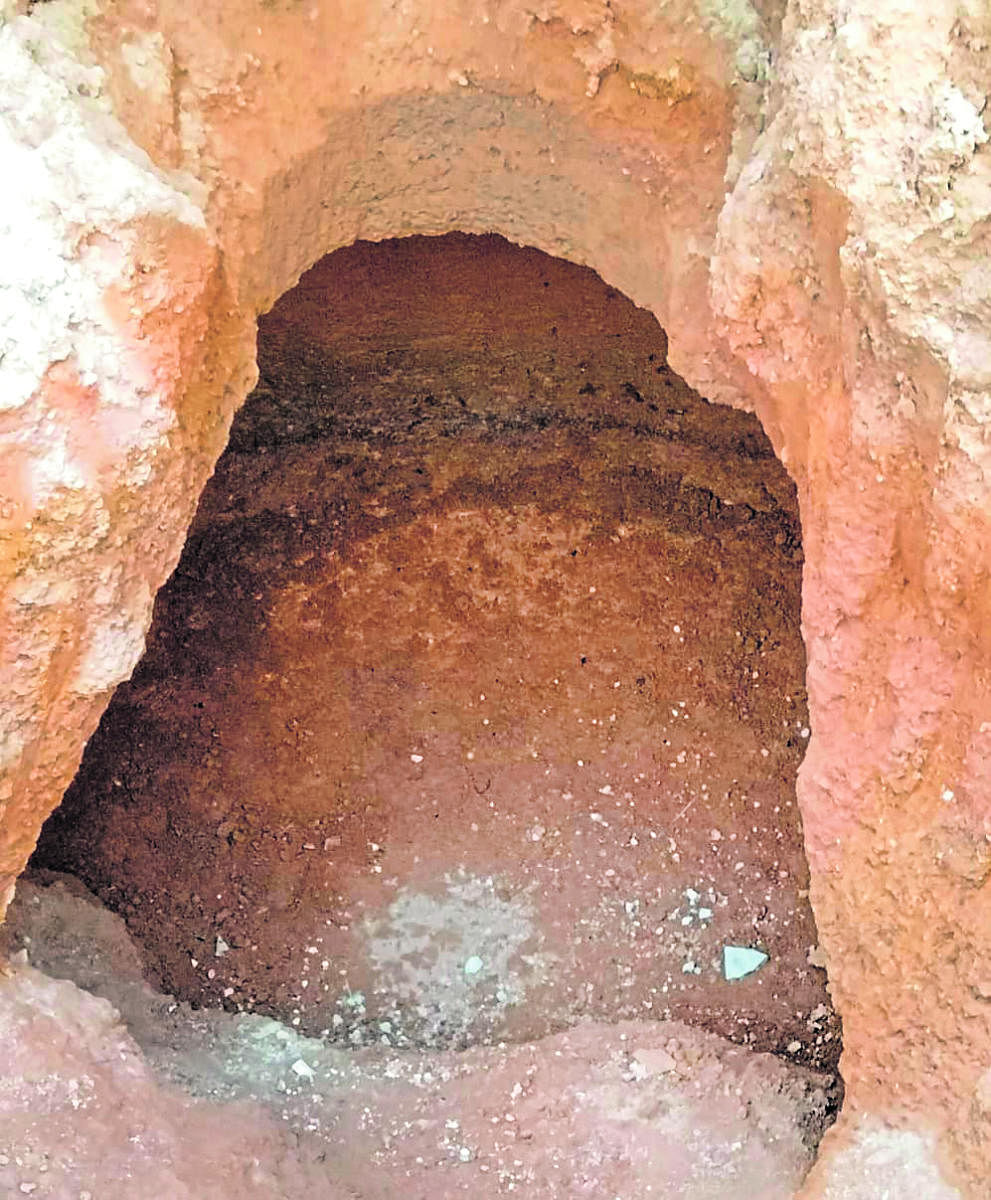
A rock-cut cave belonging to the Megalithic period was discovered at Paniyadi, which is popular for its famed Anantha Padmanabha temple of the Puttige Mutt.
During the renovation of the Anantha Padmanabha temple, the cave was discovered on the northern side of the temple. Prof T Murugeshi, associate professor, Department of Ancient History and Archaeology, MSRS College, Shirva in Udupi, visited the site and confirmed that it was a rock-cut cave of the Megalithic period.
Similar Megalithic rock-cut caves are found at the Pavanje Subramanya Temple, Sooda Subramanya temple and Santuru Subramanya temple. The Paniyadi Megalithic belongs to 800 BC. and is 2,000 years old, he said.
This discovery is unique to understand the antiquity of Phanis. Pani and hadi became Paniyadi, meaning settlement of Phanis. Phani is referred in Mahabharata and the Puranas as the ancient original inhabitants of this country.
In the Udupi district, places like Paniyadi and Paniyuru indicate the existence of the settlement of Phanis in the remote past. More than that, the Phanis were famous for their Naga worship and Naga is their totemic emblem also, he explained.
Anantha Padmanabha, the presiding deity of Paniyadi, is also related to Naga worship. Lord Anantha Padmanabha is sitting on the Naga coil and the Naga hood stands high on his head. A similar icon was found in Keelinje near Udupi belongs to the 10th century AD, while the Paniyadi deity belongs to the 14th century, said Prof Murugeshi.